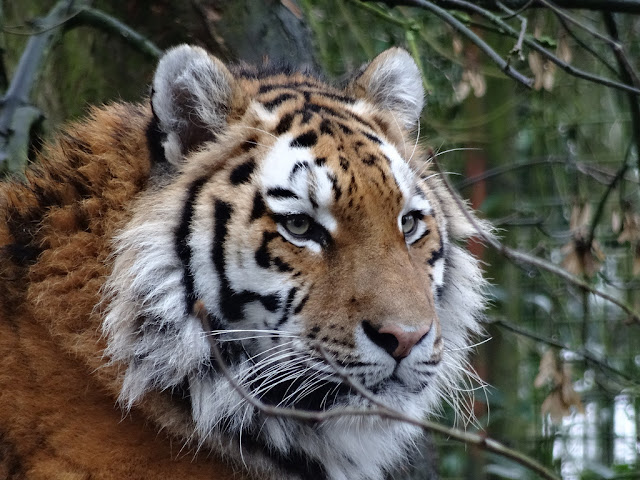The Amur tiger is one of the rarest and elusive large cats of the world. Indiscriminate poaching and habitat destruction of this species has almost pushed it to the brink of extinction. These tigers were once widespread across Russian Far East, northern China and the Korean Peninsula. By the 1940's, only around 40 tigers of these species were dwelling in the world. It was only when Russia granted full protection to these tigers that their numbers started bouncing back. The numbers of these tigers increased to 500. However, the collapse of the Soviet Union again put the tiger in the face of danger as incidents of poaching increased once again. This time, a large number of international organizations like WWF adopted the cause of saving these tigers and their numbers increased but remained stable at about 540. The tigers are thus still in the Endangered position in the IUCN Red List of Threatened Species. The home range of this species is the largest among the subspecies of tigers as the low prey densities in the habitat of these tigers necessitates their movement over large distances in search of food.
Now, if you want to be one of the few lucky individuals who can claim to have observed an Amur tiger in its natural habitat, then here is a list of the only three places in the world where you can do so.
1. Durminskoye Reserve
Located two hours drive from Khabarovsk in the Khabarovsk territory of south-eastern Russia, is the Durminskoye Reserve. The Reserve has a Ussuri taiga habitat and is situated in the foothills of the Sikhote-Alin mountain range. The reserve can be accessed by international flights to Khabarovsk. Domestic flights within Russia to Khabarovsk are also available. Siberian tigers, raccoon dogs and Siberian roe deer can all be spotted at this reserve.
2. Lazovsky Nature Reserve
The Lazovsky Zapovednik and the Zov Tigra National Park in the southern edges of Russia's Primorsky Krai region, were merged in 2014 to create the United Lazovsky State Nature Zapovednik and Zov Tigra National Park. This is one of the last surviving habitats of the Amur tiger and is a core Amur tiger breeding area with 1-3 litters reported annually.
3. Siberian Tiger Park
This place is definitely not for the faint hearted or the kind hearted ones. This tiger park, more of a large sized zoo than a wildlife reserve, located on the north bank of the Songhua River, northwest of Harbin, houses a substantial population of Siberian tigers. Here, visitors can buy live animals like chicken, ducks or even cows and watch the tigers hunting these animals down and eating them.



No comments:
Post a Comment